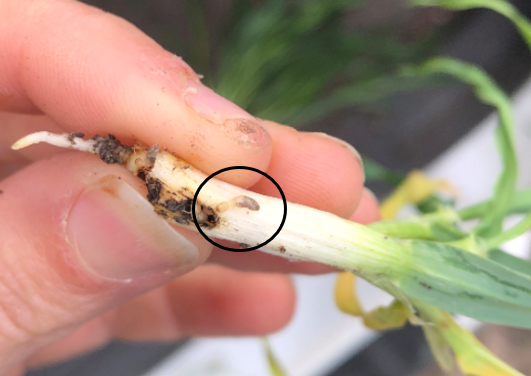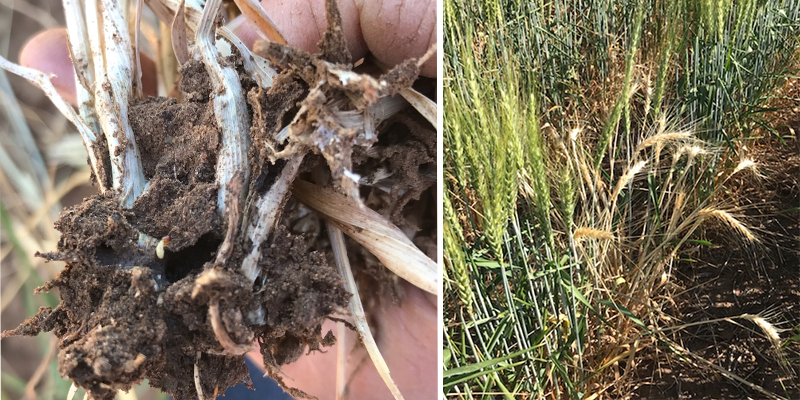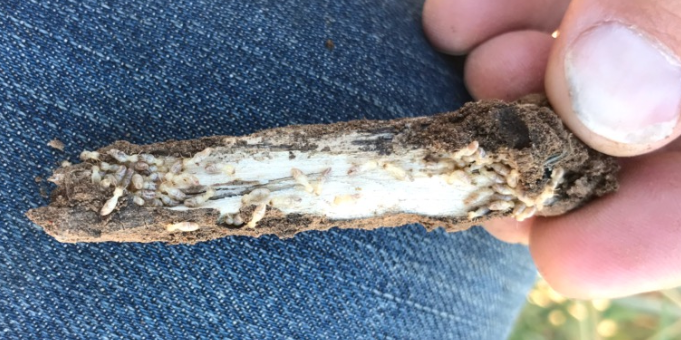Termites are common in undisturbed parts of the landscape, playing an important role in the ecosystem. It is unusual to find them in crops—but in 2020, there have been several reports of termites in winter cereals.
The first reports were received during crop establishment, and more were received once the crops started to come out in head and set grain. In most instances the termites were detected when crops were being checked for mouse damage. Termites were noticed around the roots
when pulling up dead plants.

Termites found in winter cropping. Photo by Liz Lobsey.
What are the termites doing in these crops? Are they causing the plants to die? Do I need to control them?
Termites fall into a number of ecological groupings; they can be grass-harvesting, litter-feeding, wood-feeding, or be more general in their feeding habits. In Africa, for example, several termite species occur in crops where they are sporadic pests, harvesting green and dry leaf material that they take back to their nests. In some instances, termites feed on roots and burrow into below-ground stems. Termite damage often occurs in crops after a period of drought.
The majority of reports have come from regions that had planted the first winter crop in a number of years—essentially on a long fallow. Termites (and other soil fauna) are more likely to build up when left undisturbed. All reports were of small patches, and little apparent impact on the crop. It is likely that the termites observed were harvesting the stubble or feeding on plants that were unhealthy (dying, stressed) and starting to decompose.

Termites in the base of a dead plant and the dead plant in situ, showing it was an isolated plant. It’s unclear if the termites contributed to the death of the plant or were simply harvesting the dead material.

Termites also feeding on more substantial crop residue in the field. Photos by Jordan McDonald.
If you are considering termite control (to minimise any risk to the crop), it might be worth reflecting on the benefits that have been attributed to termite activity in cropping environments. Research has demonstrated that ants and termites can deliver the same benefits as earthworms.
While the benefits that earthworms bring to soils in cool, wet environments has been long recognised, earthworm activity is limited in hotter, seasonally dry cropping regions. In these environments, ant and termite activity—particularly the tunnelling activities (foraging and nesting)—have been found to deliver significant benefits in terms of water infiltration and soil nitrogen mineralisation. It is even suggested that the presence of termites is associated with higher winter cereal yields in water-limited cropping conditions.
You can read about this research here.

Hi folks I read your article on termites.
I was a district agronomist at Nyngan from 1997 onwards.
Termites were very common in cereal stubble paddocks.
Never saw them damage any crop.
They did a great job of helping breakdown cereal stubbles and pull it into the soil.